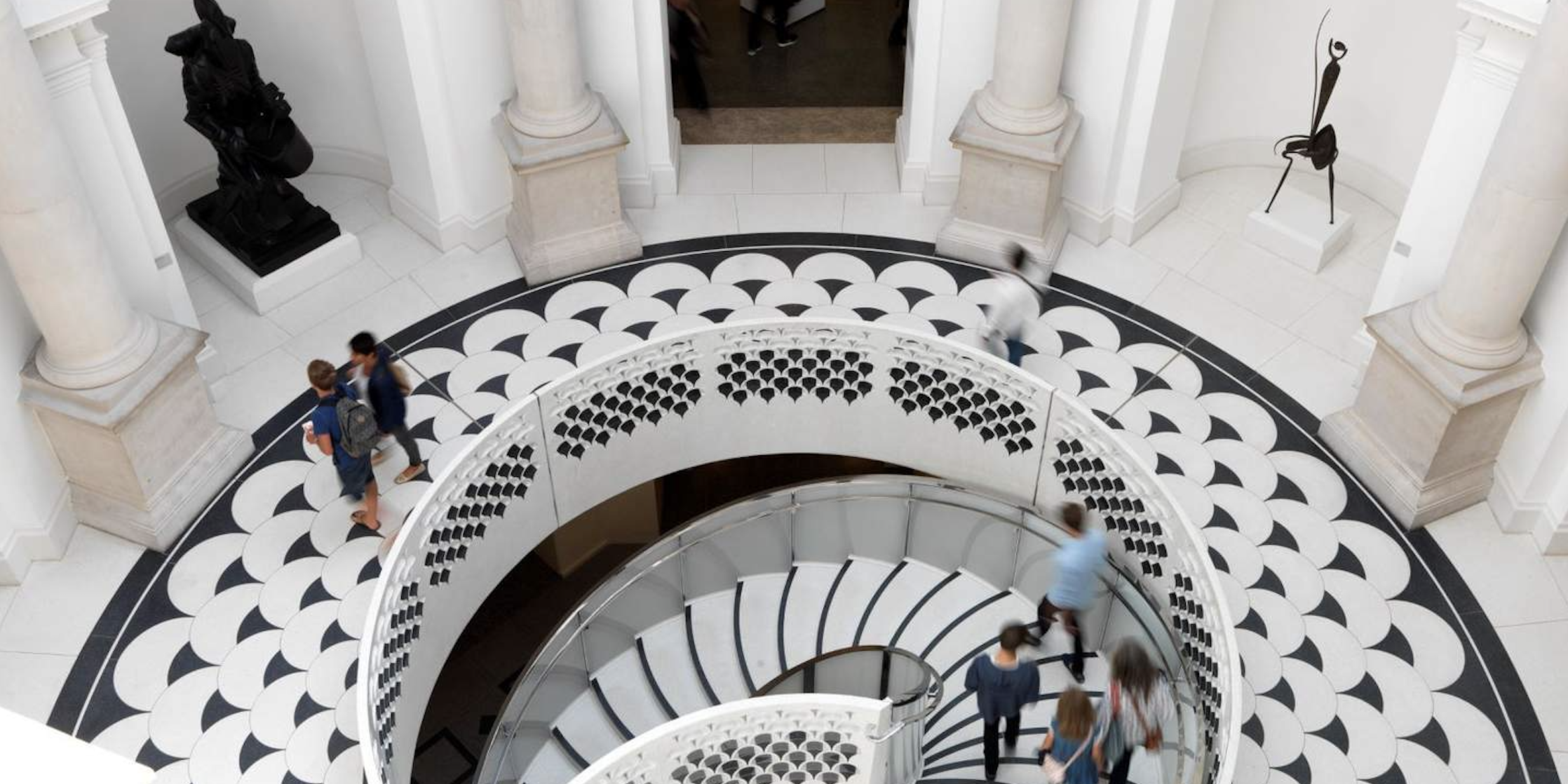The story of the Tate Museums group in England begins in 1889, when Henry Tate donated his personal collection to the British public and donated a large sum for the establishment of the first Tate Gallery in 1892.
The gallery, which was built in Millbank, London, where Tate Britain is now located, opened in 1897 with the collection donated by Henry Tate and pieces from the National Gallery. Thus was born Tate Britain, which today houses the largest collection of British Art, including modern and contemporary British art as well as historical and early modern.

Originally known as the National Gallery of Fine Arts in Britain, Tate Britain was renamed the Tate Gallery in 1932. Tate Britain remains one of the oldest museums in the country, part of the Tate network of galleries, along with Tate Liverpool and Tate St. Ives. While Tate Modern, the most popular of the two, focuses on international modern and contemporary exhibitions, Tate Britain’s collection encompasses original British art from the 1500s to the present day.
Since 1897, Tate Britain has undergone various changes over time. Special security walls built to protect works during World War II and the addition of the Clore Gallery in 1987 reflect the gallery’s evolution. Until 2000, the gallery exhibited “British” art and “Modern” art from the Western world, but in that year it moved to the “Tate Modern” gallery, and the original buildings were used exclusively for the exhibition of British art.
With its large and diverse collection, the gallery offers viewers the opportunity to explore the rich history of British art. The Modern and Contemporary British Art and Historic and Early Modern British Art collections focus on different periods, giving viewers the chance to understand the aesthetic and cultural context.
Tate Britain holds the world’s largest collection of J.M.W. Turner, known as the “father of modern art”. The works he produced during his lifetime are among the most impressive examples of modern world depictions and of the Romanticism movement. Considered one of the most important British painters, it is therefore very meaningful that the Turner Prize, the popular contemporary art prize, is named after the artist.
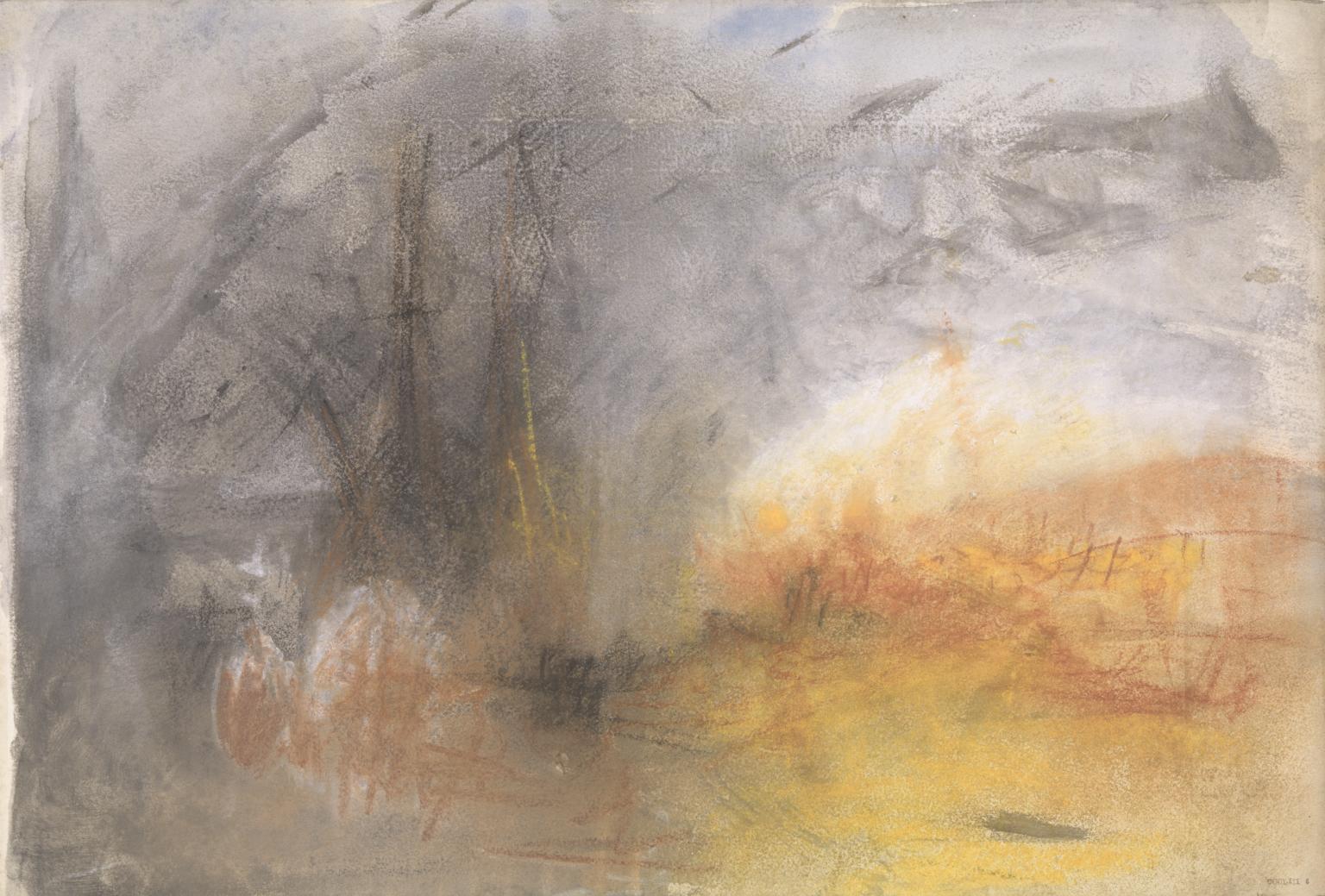 Joseph Mallord William Turner, Whalers Boiling Blubber c.1845
Joseph Mallord William Turner, Whalers Boiling Blubber c.1845
Tate Britain continues to offer a rich experience for art lovers with permanent collection exhibitions and periodic temporary exhibitions. You should definitely add it to your itinerary when you are in London.
Permanent collection
The most important part of the Tate Britain Gallery is the permanent collection of works of historical British art from 1500 to the present day, which has been purchased for the public and added to the permanent collection. The permanent collection exhibition thus includes both historical and contemporary art. Some of the most important artists, including Tracey Emin, Richard Hamilton, Douglas Gordon, David Hockney, Peter Blake, Francis Bacon, Richard Hamilton, Tracey Emin, Richard Hamilton, Douglas Gordon, David Hockney, Peter Blake, and Francis Bacon, are exhibited prominently in the gallery, sometimes in separate artist rooms and sometimes in sections focusing on different periods of art history. The permanent collection sections can be visited free of charge.

In 2023, Tate Britain commissioned Chris Ofili to create a site-specific work for the staircase of the “Centenary Development” section, which was added to the museum in 1997 for its 100th anniversary. In memory of his friend, artist Hadija Saye, who died in the Grenfell fire in 2017, Chris Ofili created an elegy mural showing Saye in flames at the top center. “Requiem” was created specifically for the site, covering all three walls of the staircase area, and has now entered the museum’s permanent collection.
TATE BRITAIN 2024 PROGRAMME
ART NOW: ZEINAB SALEH
January 19 – June 23, 2024

Zeinab Saleh presents a new and intimate series of paintings and drawings that trace both ephemeral movement and suspended time.
For Art Now at Tate Britain, Zeinab Saleh is creating a new series of paintings and drawings using acrylic paint, pastels and soft pastels. Inspired by everyday experiences, personal encounters and memories, Saleh’s materials and palette allow her to create artworks that evoke feelings of intimacy and tenderness without being fixed in time or narrative. By inviting tranquility, he draws the viewer into the space within the image. Saleh uses repeating patterns and silhouettes to project layers of time and meaning onto his canvases.
SARGENT AND FASHION
February 22 – July 7, 2024
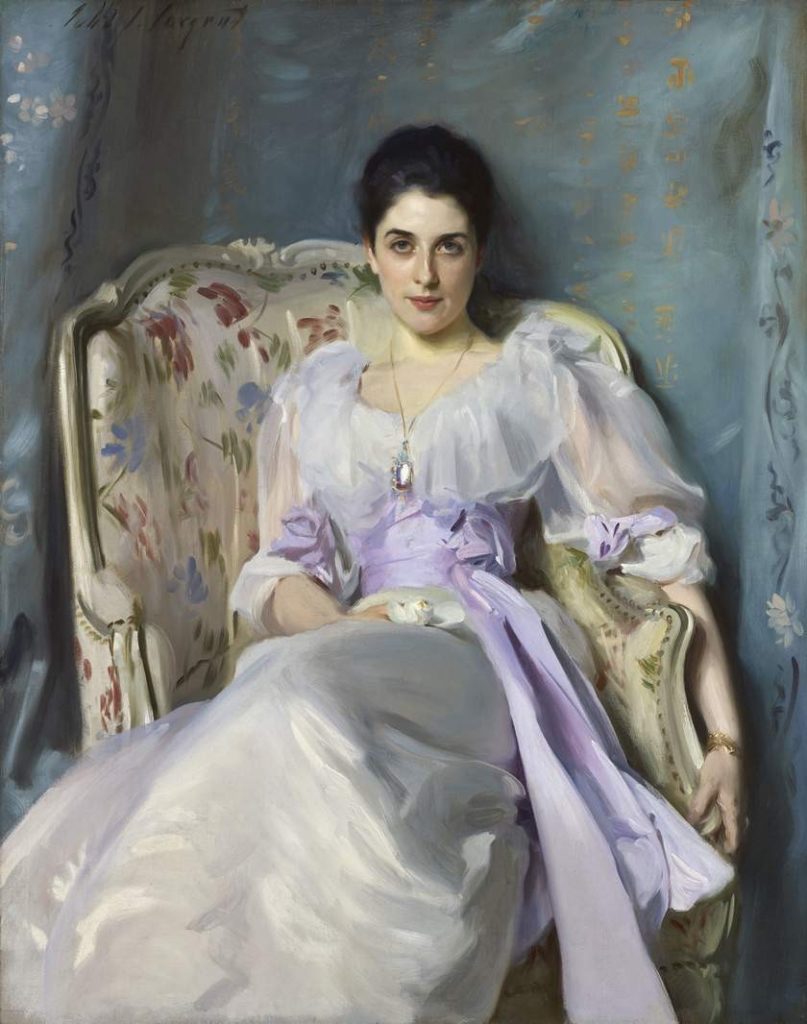
Fashion, identity, painting: An exhibition exploring the unique work of John Singer Sargent.
The exhibition explores how Sargent worked like a stylist to create images of the people he painted, often those with whom he had close relationships. It sheds new light on the acclaimed work of John Singer Sargent, known for his striking portraiture. Sargent used fashion as a powerful tool to express identity and personality. He regularly selected or manipulated the clothes of his collaborators. It was these bold clothing choices that allowed him to express his vision as an artist. This innovative use of costume was central to his art – for example, pulling a heavy coat tighter around a man to emphasize his figure, or letting a coat hanger slide sensuously off a woman’s shoulder.
The exhibition explores how this extraordinary painter used fashion to create portraits of the period that are still fascinating today. Around 60 of Sargent’s paintings, including important portraits that rarely change places, will be on display alongside a variety of period garments and the portraits in which they were worn.
Women In Revolt!: Art, Activism and the Women’s movement in the UK 1970-1990
Until April 7, 2024
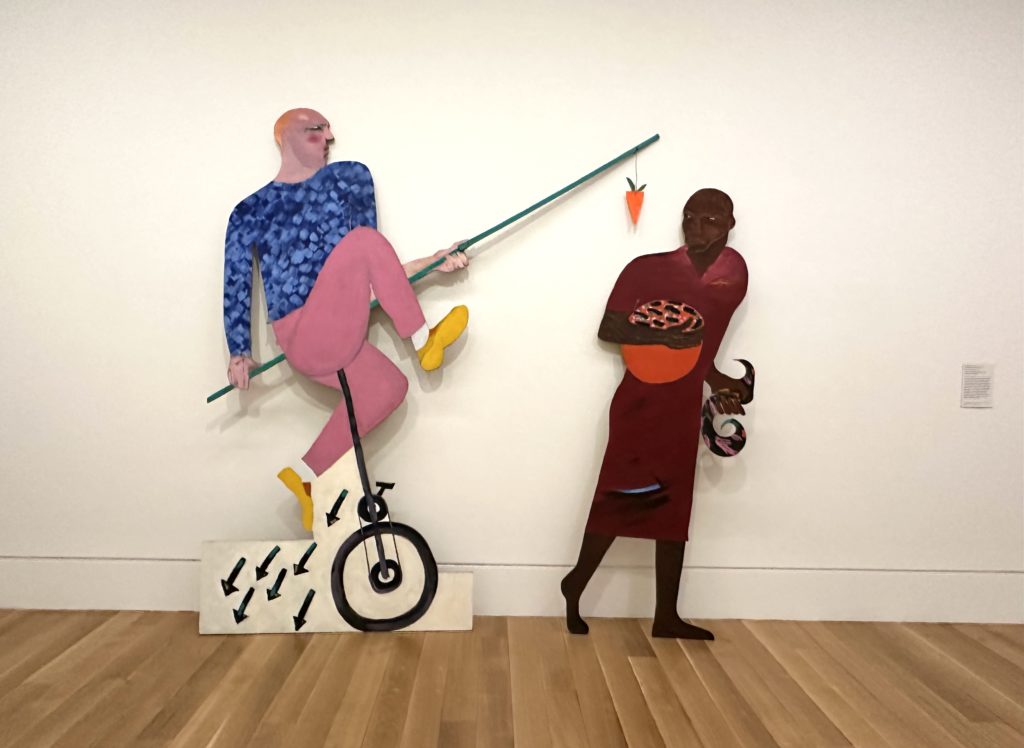 Lubaina Himid, The Carrot Piece
Lubaina Himid, The Carrot Piece
This first-of-its-kind exhibition is a wide-ranging exploration of feminist art by over 100 women artists working in the UK. The exhibition sheds light on how networks of women have made an invaluable contribution to British culture through radical ideas and rebellious methods. Their art helped fuel the movement for women’s liberation at a time of significant social, economic and political change.
In the 1970s and 1980s, a new wave of feminism broke out. Women used their lived experiences to create art, from painting and photography to film and performance, to fight against injustice. This included taking a stand for reproductive rights, equal pay and racial equality. This creativity helped shape a period of significant change for women in Britain, including the opening of the first women’s refuge and the formation of the British Black Arts Movement.
Despite their long careers, they were often left out of the artistic narratives of the time, and many of their works are being exhibited for the first time since the 1970s. Through their urgent and powerful art, visitors encounter a prolific and politically engaged community that changed the face of British culture and paved the way for future generations of artists.
Tate Britain Commission: Alvaro Barrington
May 29, 2024 – November 10, 2024
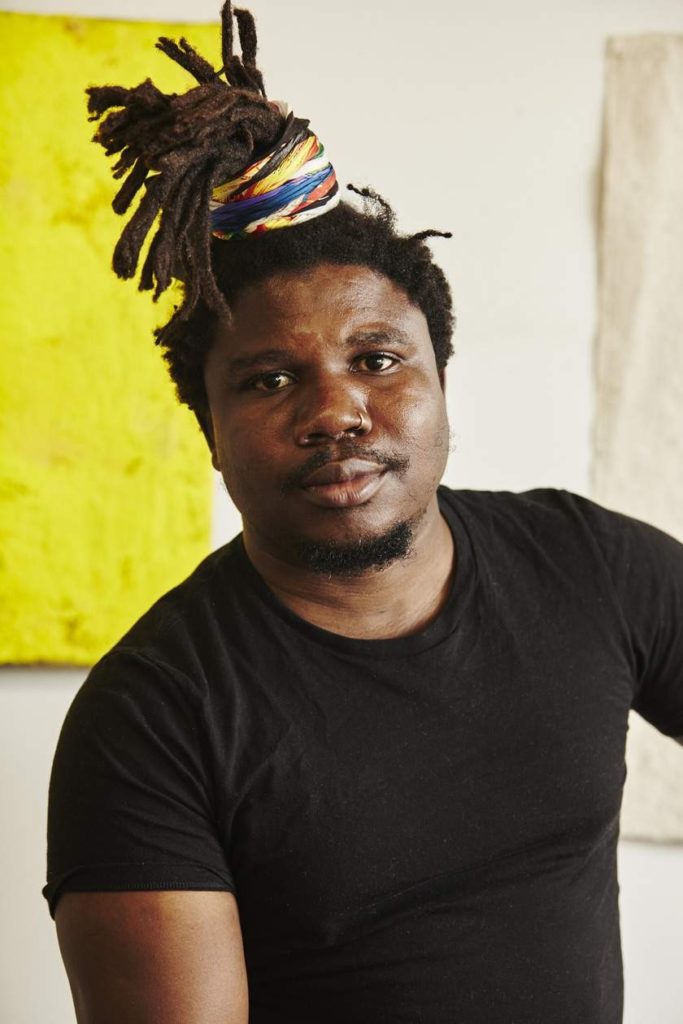
Alvaro Barrington will be the next artist to create a new installation commissioned by Tate Britain. lvaro Barrington is a London-based artist. Primarily a painter, Barrington often incorporates thread, wood and other media into his work.
Now You see Us: Women Artists in Britain 1520-1920
May 16 – October 13, 2024

Spanning 400 years, this exhibition follows the journey of women as professional artists. From the Tudor period to the First World War, artists such as Mary Beale, Angelica Kauffman, Elizabeth Butler and Laura Knight paved a new artistic path for generations of women. By pursuing commercial careers as artists and exhibiting in public exhibitions, they defied society’s expectations and challenged what it meant to be a working woman at the time.
Featuring more than 150 works, the exhibition breaks down stereotypes about women artists, who have often been seen as amateurs in history. Determined to succeed and refusing to be pigeonholed, these women bravely painted subjects usually thought to be reserved for male artists, such as fragments of history, war scenes and nudes.
The exhibition sheds light on how these artists advocated for equal access to art education and membership in the academy, crossed boundaries and overcame many obstacles to reveal what it means to be a woman in the art world.
TURNER PRIZE 2024
September 25, 2024 – February 16, 2025
The Turner Prize, which celebrates its 40th anniversary in 2024, will take place at Tate Britain.
The four artists shortlisted for the 2024 exhibition will be announced in the spring by a jury consisting of Rosie Cooper, Director of the Wysing Art Center; Ekow Eshun, writer, Publisher, and curator; Sam Thorne, Managing Director and CEO of Japan House London; and Lydia Yee, curator and art historian.
According to the Turner Prize procedure, which causes controversy every year, the exhibition of the works of the 4 artists nominated for the prize will begin in September, followed by the award ceremony in December, and will undoubtedly be at the center of media attention again.
PHOTOGRAPHING 80s BRITAIN: A CRITICAL DECADE
November 21, 2024 – May 5, 2025
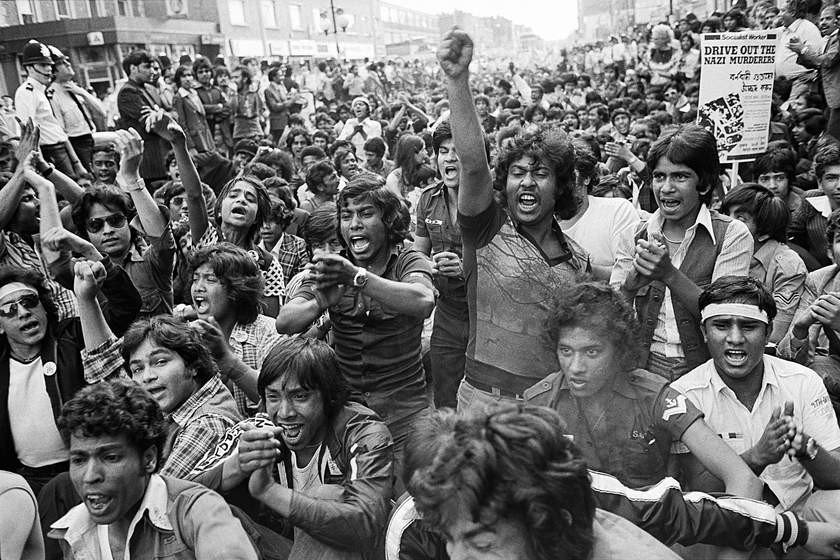
This exhibition explores powerful photography in a decade of social and political change.
Explore the 1980s, one of the UK’s most critical decades. This exhibition traces the work of a diverse community of photographers, collectives and publications that responded radically to the turbulent Thatcher years. It draws inspiration from the stories of protest and change behind events such as race riots, miners’ strikes, Section 28, the AIDS epidemic and gentrification.
At the time, photography was used as a tool for social change, political activism, artistic and photographic experimentation. See powerful images that gave voice and visibility to underrepresented groups in society. Works depicting the black art movement, the queer experience, the South Asian diaspora and the representation of women in photography are included in this exhibition.
This exhibition examines how photo collectives and publications are highlighting these often unseen stories, which have been featured in innovative photography magazines such as Ten 8 and Cameraworks. It will also look at the development of Autograph ABP, Half Moon Photo Workshop and Hackney Flashers.
Visitors will get behind the lens and trace the extraordinary transformation of photography in Britain and its impact on art and the world.
Find out more about Tate Modern, a member of the Tate group of galleries, here!

